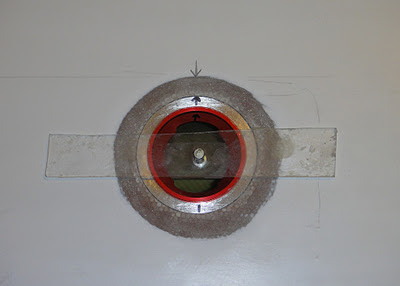Hours to date: 195.0
Seeing the light at the end of the tunnel now with the Port wing.
Leading edge is now reinforced.
Root rib is glassed in and I did a bit of filling in with Micro balloons in the honeycomb in this rib plus on the flap and aileron counterweights. Also at the end of the Aileron there is a gap that needs to be filled with micro. The micro tends to be like working with slightly melted chocolate so after a while it runs into a nice smooth finish. I work it into any cavities with a wooden stirring stick - usually I cut one in half to have a finer edge to work with.
I also made up a couple of plywood washers that will go in the holes in the wings for the aileron bell cranks. I used a hole saw of 30mm diameter and that makes a 26mm diameter circle of plywood when cut out. The photo shows the plywood washer with plastic (nylon?) washer on top (black) and then the ali plate that will be screwed into the bottom of the wing - this will hold the aileron bell cranks in place and allows for future removal should that be needed.
The fuel drain is now finished except for putting in the metal fittings. Managed to get it pretty flush in the end. Also the fuel cap is looking quite decent now too - with just the cavity to fill in around the edge with filler to make that flush.
Next up I will be doing all these jobs to the Starboard wing so most likely won't be posting again for a while.
Merry Christmas everyone and see you again in the new year.
 |
| Leading edge reinforced with 40mm glass and peel ply |
 |
| Root rib - Micro in honeycomb and glass on edges |
 |
| Micro in the gap at the end of the ailerons |
 |
| Plywood washer for bell cranks |
 |
| Fuel drain pretty much done - bar the fittings |
 |
| Fuel cap - looking fairly decent - just needs filler now. |












































